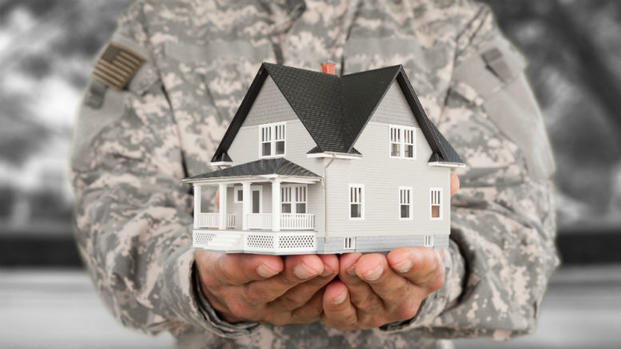I was telling a friend about the great deal I got when I refinanced my VA-guaranteed home loan, and he was flabbergasted. “What a sweet program!” he said. “I wish I could get one of those.”
Without military service, he’s not eligible. But his reaction got me thinking about what a good deal this program is for those of us who have worn the uniform. I guess I’d begun to take it for granted.
If the possibility of rising interest rates or higher home prices has you contemplating a new home loan or refinancing an old loan, don’t forget about our old friend, the VA home loan. The Department of Veterans Affairs website (www.va.gov) is a comprehensive resource for information on these loans, but here’s a quick refresher on some key aspects of the program.
The VA doesn’t loan out any money. Contrary to what many believe, the VA isn’t in the business of making loans. They just guarantee them. You’ll go through a normal lender, and you’ll still have to prove creditworthiness and income during the application process.
Eligibility is wide open. You could be eligible with as little as 90 days of active service during wartime or six months during peacetime. Reservists, guardsmen and spouses of those who died in service or from a service-connected disability also may be eligible. Not that long ago, you had to work through a relatively burdensome process to get a Certificate of Eligibility from the VA. Today, that process is easy and usually automated through the VA’s website or most lenders that handle VA loans
Primary residence. VA loans can only be used for your primary residence. They can’t be used for rentals or vacation homes. However, although it’s relatively complex, it is possible to have two VA loans at the same time. For example, if you bought with a VA loan and moved because of a job change, you might be able to use your remaining entitlement to get another VA loan and buy your new primary residence.
No down payment and no PMI. I think this was the point of greatest envy for my friend. With a conventional loan, you’ll typically need to bring a 20% down payment to the table or you’ll be required to purchase private mortgage insurance. Not so with the VA loan. Unless you’re receiving VA disability compensation, VA loans require you to pay a tax-deductible funding fee (typically 2.15% of the loan), but they don’t require a down payment or PMI.
Refinance options. You can also use a VA loan to refinance a conventional loan or another VA loan. If you’ve already got a VA loan, the Interest Rate Reduction Refinance Loan is a pretty great option. I know — I’ve used it twice. It has just a 0.5% funding fee, and there’s no appraisal or financial underwriting required by the VA (lender’s requirements may vary).
Buyer takeover. VA loans allow another VA-eligible loan buyer to step in and assume your loan. If interest rates eventually spike, this could be a nice feature. While the new buyer would have to come up with the cash difference between the loan value and the house’s market value, the terms of the loan could be a lot more favorable and the cost of the transaction could be substantially less.
It’s not one and done. Contrary to urban legend, you can use a VA loan more than once. If you’ve paid off the loan and no longer own the home, you are eligible again for a new VA loan.
The VA loan powered a generation of post-World War II homeowners. Almost 70 years later, it’s still a valuable, attractive benefit that’s worth investigating — even if it’s been decades since you wore the uniform.
And if it works out, you just might become the envy of all your non-eligible friends, too.









